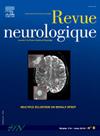法国农业健康保险计划患者的缺血性中风护理:一项全国性研究。
IF 2.3
4区 医学
Q2 CLINICAL NEUROLOGY
引用次数: 0
摘要
背景:城乡之间的健康差距日益引起人们的关注。本研究的目的是确定在法国,参与农业经济部门法定医疗保险系统(即互助农业社会保险[MSA])的患者与所有其他患者之间,缺血性中风后的临床概况、护理和结果是否存在差异。方法:从法国国民健康保险数据系统中提取2018年法国大陆所有年龄≥20岁的缺血性卒中住院患者的数据。年龄标准化百分比用于比较MSA与其他中风患者获得的护理。使用泊松回归评估健康保险计划与病死率之间的关系。结果:87,864例脑卒中患者中,MSA患者7928例(9%)。MSA患者多为农村居民(75.4比32%)和老年人(中位年龄:84比76岁)。在中风前的12个月里,去看全科医生(GP)的机会相似,但MSA患者去看心脏病专家的可能性较小。卒中前药物处方显示男性MSA患者心血管状况更好(例如,降糖药:18.1% vs 21.5%)。一部分来自较低的卒中单元(例如,女性:55.3对59%),其他急性护理指标,包括再灌注治疗,具有可比性。MSA患者的粗7天病死率较高(相对危险度[RR]: 1.44, 95% CI[1.32-1.57]),但在调整了年龄、合并症和卒中管理后,这一劣势降至无显著性水平(调整后的RR: 1.07 95% CI[0.98-1.18])。结论:对于大多数农业、农村、MSA人群,卒中前、急性和卒中后护理与其他患者相比没有显著差异。2018年,农村全科医生密度较低和远离专科中心并未导致MSA患者获得预防性和急性卒中护理的机会减少。本文章由计算机程序翻译,如有差异,请以英文原文为准。
Ischemic stroke care for patients affiliated to the French agricultural health insurance scheme: A national study
Background
Health disparities along the rural-urban spectrum are a growing concern. The objective of this study was to determine whether in France, clinical profile, care and outcome after ischemic stroke differed between patients affiliated to the statutory health insurance system dedicated to the agricultural economic sector (i.e., Mutualité Sociale Agricole [MSA]) and all other patients.
Methods
Data on all patients aged ≥ 20 years hospitalized for ischemic stroke in mainland France in 2018 were extracted from the French National Health Insurance Data System. Age-standardized percentages were used to compare the care accessed by MSA versus other stroke patients. Associations between health insurance scheme and case fatality were assessed using Poisson regression.
Results
Of 87,864 stroke cases 7928 (9%) were MSA patients. MSA patients were more often rural dwellers (75.4 versus 32%) and older (median age: 84 versus 76 years). In the 12 months prior to the stroke, access to general practitioner (GP) was similar, but MSA patients were less likely to have an appointment with a cardiologist. Pre-stroke drug prescriptions suggested a better cardiovascular profile in male MSA patients (e.g., antidiabetics: 18.1 versus 21.5%). A part from a lower access to stroke unit (e.g., women: 55.3 versus 59%) other acute care indicators, including reperfusion therapy, were comparable. The crude 7-day case fatality was higher for MSA patients (Relative Risk [RR]: 1.44, 95% CI [1.32–1.57]), but this disadvantage reduced to non-significant level after adjustment for age, comorbidities and stroke management (adjusted RR: 1.07 95% CI [0.98–1.18])
Conclusions
For the mostly farming, rural, MSA population, pre-stroke, acute and post-stroke care did not differ markedly from that provided to other patients. The lower density of GP in rural areas and the remoteness from specialized center did not result in less access to preventive and acute stroke care for MSA patients in 2018.
求助全文
通过发布文献求助,成功后即可免费获取论文全文。
去求助
来源期刊

Revue neurologique
医学-临床神经学
CiteScore
4.80
自引率
0.00%
发文量
598
审稿时长
55 days
期刊介绍:
The first issue of the Revue Neurologique, featuring an original article by Jean-Martin Charcot, was published on February 28th, 1893. Six years later, the French Society of Neurology (SFN) adopted this journal as its official publication in the year of its foundation, 1899.
The Revue Neurologique was published throughout the 20th century without interruption and is indexed in all international databases (including Current Contents, Pubmed, Scopus). Ten annual issues provide original peer-reviewed clinical and research articles, and review articles giving up-to-date insights in all areas of neurology. The Revue Neurologique also publishes guidelines and recommendations.
The Revue Neurologique publishes original articles, brief reports, general reviews, editorials, and letters to the editor as well as correspondence concerning articles previously published in the journal in the correspondence column.
 求助内容:
求助内容: 应助结果提醒方式:
应助结果提醒方式:


